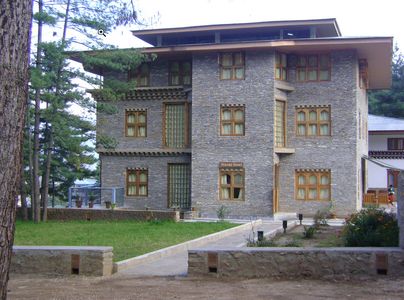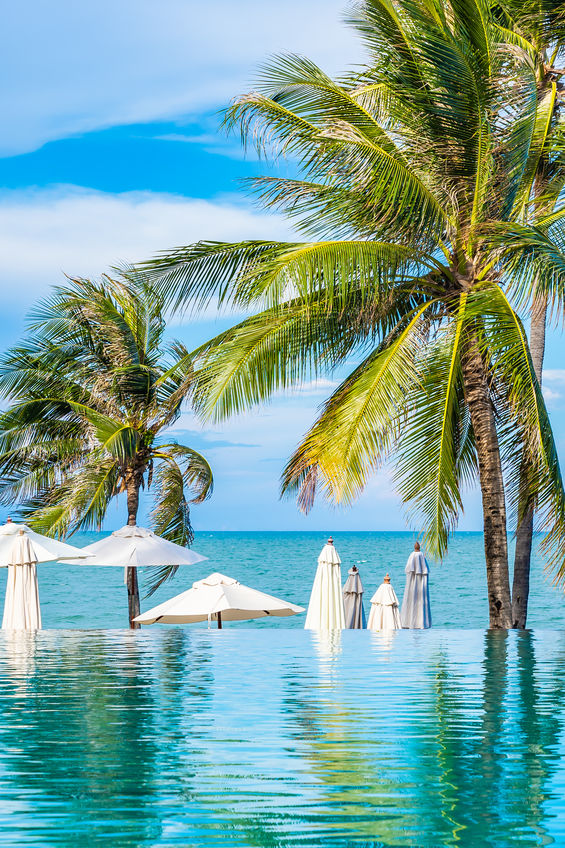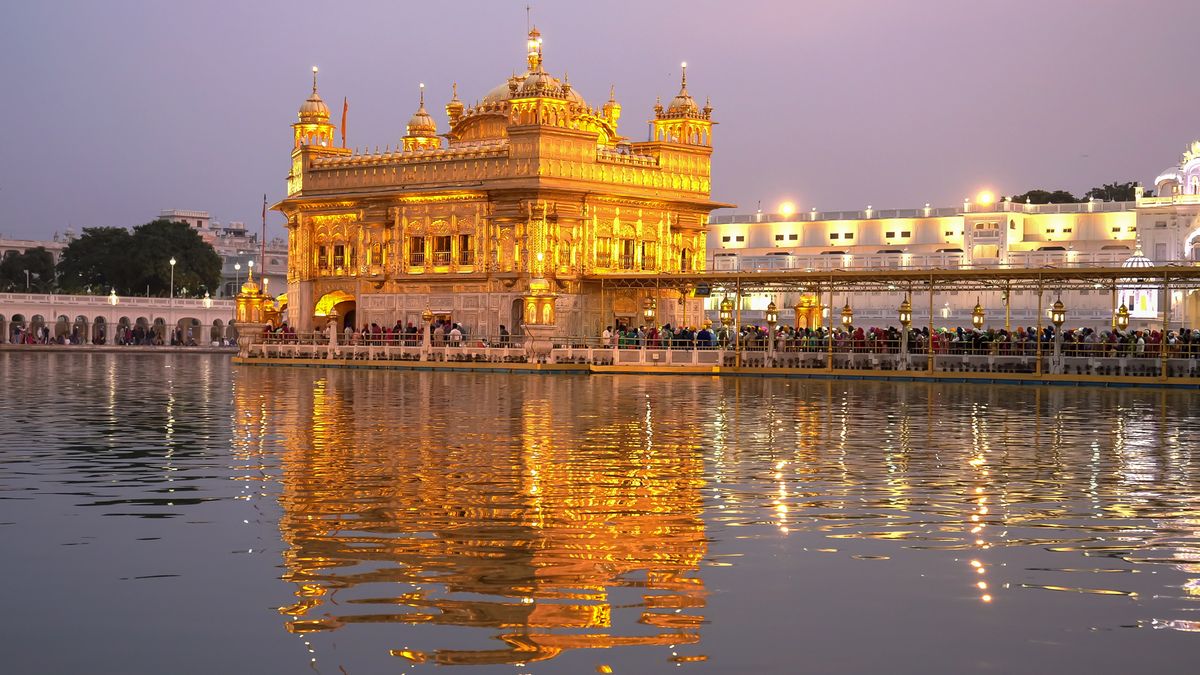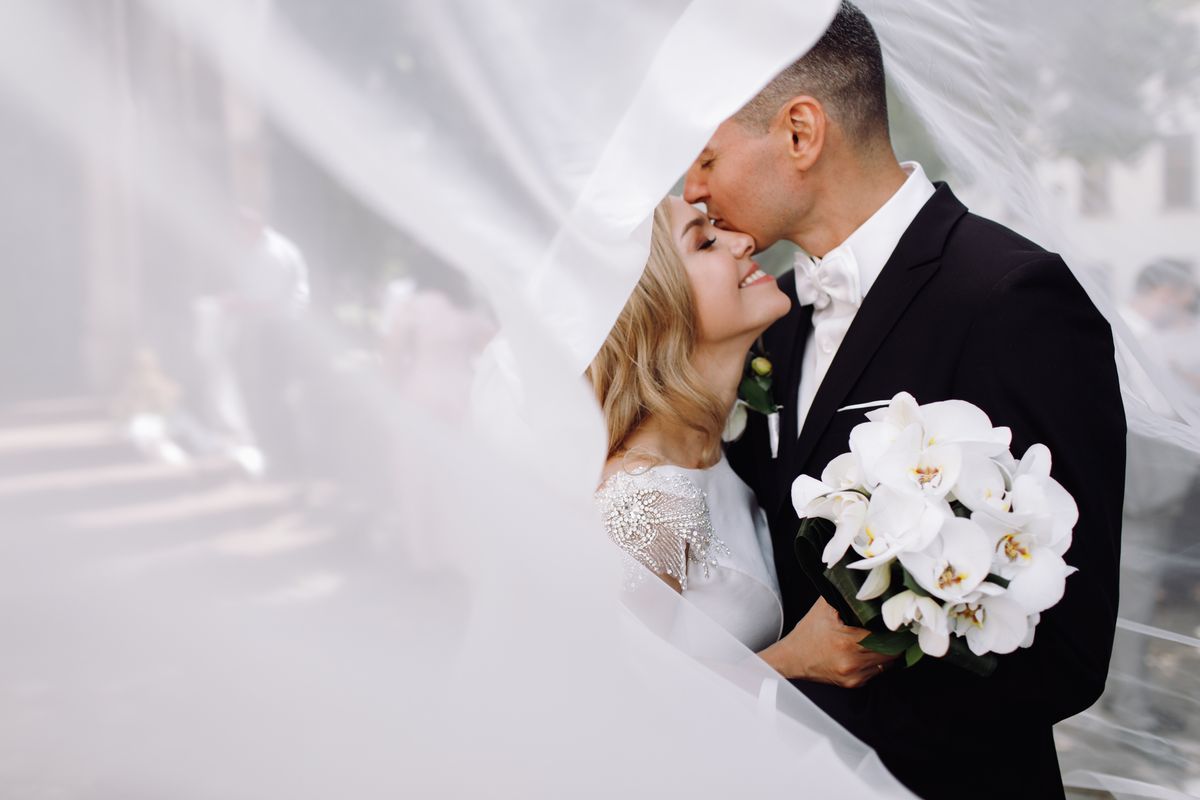
About the tour
Bhutan or as it is called the Kindom of Bhutan is a small landlocked state located in the eastern Himalayas. Many people refer to Bhutan as the 'Last Shangri-La on Earth'. Bhutan shares its borders with the Republic of India to the South, East and West of the country and its borders to the north with the People's Republic of China. Bhutan has a population of about 690,000 people and the capital city of Bhutan is Thimpu.
Accommodation

Peaceful Resort or Similar
2 night(s) in Thimphu
Bhutan Metta Resort & Spa or Similar
2 night(s) in Paro
Included in the price
Thimphu
- 02 Days sightseeing
- English speaking Experienced Guide. Male or Female
- Monuments Fees
- Road permit, and all toll taxes
Thimphu
- 02 Days sightseeing
- English speaking Experienced Guide. Male or Female
- Monuments Fees
- Road permit, and all toll taxes
Day-wise Itinerary
ExpandDay 01 : Arrive Paro To Thimphu
- After arriving and visa formalities and collection of baggage, you will be welcomed by our tour representative who will be your tour guide during your entire trip in Bhutan. Check into your hotel in Thimphu. Free until lunch time for some rest from early morning flight, refreshment and lunch.
- Afternoon, you will visit the following places:-
- Tashichho dzong : The Tashichho Dzong is a Buddhist monastery cum fortress at the northern edge of Thimpu the capital city of Bhutan. The Dzong was built on the western bank of the river Wang Chu and has historically served at the seat of the DrukDesi or the Dharma Raja of Bhutan’s government. After the kings assumed power in 1907 this post was combined with that of the king and Thimphu severed as the summer caital of the kingdom before becoming the full time capital of Bhutan. The original Thimphu Dzong (the Dho-Ngyen Dzong) is said to have been constructed in 1216 by Lama Gyalwa Lhanangpa. And was later taken over by Lama Phajo Drukgom Shigpo before the Dzong was conquered by Shabdrung Ngawang Namgyal, who found the Dzong to be too small and expanded it to what is now known as theTashichho dzong is also called the "fortress of glorious religion." It was erected in 1641 and was subsequently rebuilt by King Jigme Dorji Wangchuck in the 1960s. The Dzong has been seat of the Royal government since 1952 and presently houses the Throne room and the Kings secretariat. The Tashichho dzong is also home to several ministries of the Bhutanese government, and the Central Monk Body which is the apex organization of the country's main spiritual order. The monument welcomes visitors during the Thimphu Tsechu festival which is held in autumn each year. The Dzongs main structure is a two striped quadrangle with 3 storied towers on each of its four corners. Folk Heritage Museum : The folk heritage museum was open to the general public in 2001 upon completion. It treasures troves of culture and rich Bhutanese heritage provide rich insights into the Bhutanese ethos. Try to schedule your visit during the morning hours since the museum is less crowded at that time and there is plenty of sunlight to go around. The folk heritage museum is housed in a replica traditional Bhutanese house learn first-hand about Bhutan’s rich cultural traditions, its deeply rooted heritage which spans thousands of years and the Bhutanese way of life. The tour of this almost living museum will also give you a glimpse onto how many rural folk of the country live today following the ancient Bhutanese ways. National textile museums: The second important Museum that also opened its doors in 2001 is the National Textile Museum of Bhutan. During a trip to this museum you will get an up close and personal experience of the living national art of weaving. The changing exhibitions at the museum will introduce you to the major weaving techniques that the weavers employ to make these beautiful fabrics. It also gives you a chance to see the various styles of dressing of the men and women from different parts of Bhutan. The museums exhibits follow 6 major themes :
- • Wrap Pattern Weaves
- • Weft Pattern Weaves
- • Role of Textile in Bhuddism
- • Historical achievements in textile
- • Textiles made from different indigenous fibers
- • The royal textile collection.
- National institute of zorig chusum : The art and crafts currently taught in Bhutan, were introduced to the country in the 15th century by Trenton Pema Lingpa. Trenton Pema Lingpa also known as the Great Treasure National Institute for Zorig Chusum - Discoverer is credited to have introduced these art forms to the people of Bhutan. These traditional crafts are a representation of the centuries of knowledge and ability that was been handed down to master craftsmen and artisan through each generation. Bhutan’s unique artistic tradition has played a vital role in shaping the countries distinct culture and heritage. It was realized that this unique and priceless heritage of the nation need to be protected and promoted with the strong patronage of the royal government. With this vision in mind the royal institute for Zoring Chusum was established in the year 1971 to train the youth in the 13 traditional Arts and Crafts of Bhutan. The institute now falls under the aegis of the National Technical Training Authority which was established in 1990 to ensure high quality vocational training for the people of the country. The institute has now been operational for almost 40 years and has taught students the arts of painting, embroidery, calligraphy, sculpting and wood carving. National memorial chorten : The National Memorial was built by Bhutan's third king, H.M. Jigme Dorji Wangchuck who is also known as the "father of modern Bhutan." He wanted to erect a monument carrying the message of world peace and prosperity. However, he was unable to give shape to his idea in his lifetime due to pressures of state and other regal responsibilities. After his untimely demise in 1972, the Royal Family and Cabinet resolved to fulfill his wishes and erect a memorial that would perpetuate his memory and also serve as a monument to eternal peace, harmony and tranquility.
- The National Memorial Chorten was gifted to the nation on 28 July, 1974. The exquisite wall paintings and the delicately carve statues reflect deep insights into Buddhist spirituality and a rich tradition of prayer and learning. The National Memorial Chorten is known as the ‘most visible religious landmark in Bhutan’. The Chorten was consecrated by His Holiness, the Late Dudjorn Rinpoche. Unlike other Stupas the Chorten is not a shrine for the mortal of the late King. The Chorten on contains a photograph of the King in full ceremonial attire. The King had intend for the Choten to be “a Chorten that represents the mind of Bhuddha." The national Memorial Chorten is located in the center of the capital city, Thimphu and is designed like a Tibetan style Chorten. The Chorten is patterned of the classical Stupa design with a pyramidal pillar crowned by a crescent moon and sun. One of the most distinct features of the Chorten is its outwards flaring rounded part that makes the Chorten look more like a vase rather than the classical dome. The interior of the Chorten has a large number of paintings of Tantric deities, in explicit sexual poses that sometimes can be a little disconcerting to visitors. Overnight in a hotel in Thimphu.
Day 02 : Thimphu To Dochula Pass
- Post breakfast you will be heading towards Dochula Pass and on the way to Dochula Pass you will visit the first Dzong of Bhutan i.e Simtokha dzong : The Simtokha Dzong is a small Dzong located approximately 5 kilometers south of Thimphu. The Dzong is officially called the Sangak Zabhon Phodrang which roughly translates to the Palace of the Profound Meaning of Secret Mantras. The Simthoka Dzhong is said the be the first fortress to have been built by the legendary Shabdrung Ngawang Namgyal in Bhutan. The fortress was constructed in the year 1629. Some suggest the Dzong is the oldest surviving complete Dzong in Bhutan. The Dzong is currently home to the Institue for Languages and Cultural Studies which is attended by monks and common people alike. The site of the Dzong is said to have been built over a site where a demon had disappeared in to the rocks nearby. The site of the Dzong is located very strategically at a point from where the Dzong can protect the Thimphu Valley and also protects the valley that leads to the Dochu La pass and onwards to Eastern Bhutan. The Dzong was attacked during its construction by the Tibetans and a group of Bhutanese Lamas who were against Shabdrung. Even though the initial attack failed the Dzong was subsequently conquered in 1630. After a few failed attepmpts the Shabdrung regained control over the Dzong when the Dzongs main building caught fire and its roof collapsed on its occupiers killing them all. Later, we will stop over for tea at Dochula Pass (3,100 m), where on a sunny day, you can get stunning views of the Himalayan ranges. The Dochu La Pass is probably the best known mountain pass in Bhutan. Located at an altitude of 3150 meter above sea level, the Dochu La Pass is about 30 kilometer away from the capital city Thimphu and the road to Punakha. On a clear day the pass offers visitors a spectacular view of the majestic eastern Himalayan Ranges. A cup of hot coffee or tea at the pass has almost become part of tradition for people travelling to and fro from Punakha to the capital city. There is a small cafeteria at the pass that offers a chance for travelers to enjoy a hot beverage or a snack, it is located just off the road and overlooks the pass and is an ideal place to sit back, relax and enjoy the view. Another striking feature at the pass is the 108 Druk Wangyal Khangzang Chortens that were built for the well-being of all sentiment beings on earth. The 108 Chorten were built as a tribute to the Kings of Bhutan for their selfless service and leadership they offer to the people of Bhutan. These Stupas or Chortens also represent the peoples love, appreciation and loyalty towards the country’s King. Later we will drive back to Thimphu and do some sightseeing like : Kuensel phodrang : The Kuensel Phodrang or the Buddha point is the world’s largest sitting Buddha statue, the statue is 167 feet high. The statue is situated on top of a hill overlooking the city of Timphu, it can be accessed by road and is about 15 minutes away from the city’s center. The word Kuensel means everything is clear and from this place you will sure enjoy a great view of the Thimphu Valley on both sides. The statute will house a temple inside it, the statue and its adjoining car park and recreational center are currently under construction and is expected to be ready by December 2012. The statue is constructed out of bronze and is studded with many semi-precious stones. Since they are no factories in country that can make such a large bronze cast structure, statute is being manufactured in China and the pieces are brought to Bhutan and are assembled here. On the drive to the statue the steep winding hill road offers an unparalleled view of the city of Thimphu and is an excellent place to capture a view of the city especially after dark. A journalist once described the view as “seeing an osasis of light in the desert of darkness“ as the city light of Thimphu shine very bright in an otherwise dark Thimphu valley. Motithang takin preserve : The Motithang Takin Preserve also known as the Thimphu Zoo by many is a small natural preserve for the Takin Bhutan’s national animal. It was originally a mini zoo, but it was converted in a preserve later on as the Takin. The mini zoo contained a small number of Takin but the King of Bhutan later decreed that it was improper for a Buddhist nation to keep an animal in captivity. The animals were set free and the zoo was shut down, but for some reason the Takin refused to leave the area for the forests nearby. Instead the animals were frequently found roaming around the streets of the capital city in search for food. As a result the government decided to demarcate an 8 acre fenced location as the Motithang Takin Preserve. The preserve is a forested preserve that mimics the Takin’s natural habitat, in addition to the Takin there are a few musk deer and barking deer that live inside the preserve. There are plans to expand the preserves collection to include other rarely seen animals that live in Bhutan, currently the preserve plans to add the Red Panda and the Himalayan Serow to the preserve. Changangkha Lhakhang :
- The Chagkha Lhakahng temple is a early medieval Buddhist temple in the capital city Thimphu. The temple is situated on a ridge overlooking the city, near Mohitang on the outskirts of Thimphu. The temple is the oldest temple in Thimphu and was constructed by Lama Phajo Drukgom Zhigpo in the 12 century AD. Lama Phajo Drukgom Zhigpo is also the founder of the Drukpa Kaygo School of Buddhism. The Lhakhang’s central deity is Chenirizig. There is a large statue of Chenrizig, the 11 headed, thousand arm manifestation of Avolokiteshwara. The prayer books in the temple are larger in size compared to the usual Buddhist texts. There are also large prayer wheels and paintings in the walls of the temple. The temple offers an excellent view of the city of Thimphu from its courtyard. National handicrafts emporium : The National Handcrafts Emporium is a state run Handicrafts showroom in 4 different cities of Bhutan. The emporium is run by the National Woman’s Association of Bhutan as a Non-Government Organization that is run under the royal supervision of Her Royal Highness Ashi Sonam Choden Wangchuk. The Handicrafts Emporium showcases the finest handicrafts of the country and supports one of Bhutan’s most important income generating activities. The lack of an organized handicrafts industry in Bhutan is one of the biggest concerns of the organization running the Emporium as they strive to create some form of organization in this otherwise unorganized sector. Later after visiting all these places mention above you will now go and explore. Weekend market : The weekend market is highly recommended to travelers who want to experience the local Bhutanese way of life. The weekend market is located in a set of stall of both side of the Wang Chhu River. The market essentially is a farmers market, where every week vendors from throughout the region start arriving by Thursday evening and stay at the market till Sunday. It is interesting to see the well-heeled and well to do residents of the city jostle with the common folk for the freshest produce of the region. Depending on the season you will find different kinds of fruits and vegetables available in the market. The most striking feature of the market is the chilli stalls that sell chilli in its fresh or dry from. Chili is the favorite spice of the Bhutanese and no Bhutanese dish is complete without a generous garnish of the fiery chilli. Across on the western banks of the river, the Kundeyling Bazaam houses collections of shops and stalls that sell textile, clothing, handicrafts and other goods that the locals may need. You will also find a lot of cheap ornamental goods on sale that have been imported from Nepal it is advisable to visit the market with a guide who can help you hunt for a good bargain. Overnight in a hotel in Thimphu.
Day 03 : Thimphu To Paro
- Ta Dzong (National Museum) : The National Museum of Bhutan is housed inside the six storied circular Ta Dzhong. The Ta Dzong is a medieval watch tower situated above the Rimpung Dzong. The Ta Dzong was constructed in 1656 with a purpose to give advance warning to the Paro Dzong in case of an approaching army, in fact the word Ta means 'to see' in Dzongkha. The future first king was imprisoned here for a brief period in 1872. In 1968 the Ta Dzong was converted into the National Museum of Bhutan. The Museum houses a priceless collection of textile, costumes, paintings, appliqué, wooden handicrafts, weapons, armour and jewellery. There is a small section dedicated to the natural history of Bhutan. There is a small chapel on the top of the building with icons representing Himalayan Buddhist traditions.
- Rimpung Dzong : The Paro Dzhong is probably Bhutan's best known and most iconic Dzong. This is probably the first building you will notice when you land at Paro International Airport and will probably be your first memory of Bhutan. The imposing Dzong is perhaps the finest example of Dzong architecture existing the world today, the massive buttered walls of the fortress dominates over the valley. The Rinpung Dzong's name translates to the "Fortress on a heap of Jewels". The fortress was constructed in 1644 by Shabdrung Ngawang Namgyal on the foundations of an ancient monastery. The fort played a crucial role in the history of the Paro valley as the Dzong helped keep the marauding Tibetans away from the Paro valley. The Dzong was hit by an earthquake in 1897 but survived unharmed, but a fire in 1907 ended up causing severe damage to the Dzong. The Dzong is built on a steep hill along the banks of the Paro Chu River. The front part of the Dzong is home to the District administration while the other courtyard towards the rare houses the district monk body. The approach toward the Dzong is through a traditional covered bridge called the NemiZam. A paved stone path runs alongside the imposing outer walls of the structure. The valley's annual springtime religious festival called the Paro Tsechu is organized each year in the courtyard of the dzong and is attended by tourists from all over the world. Kyichu Lhakhang : The Jowo Temple of Kyichu is one of the oldest temples in Bhutan. The temple was built by the Tibetan King Songsten Gampo in the 7th Century AD. The Kyichu Lhakhang was one of the 108 temples constructed by him to subdue a demon that was terrorizing the people of the Himalayas. The temple is believed to have been visited by the Guru Rinpoche in the 8th Century during his visit to the Paro Valley. Other important personalities to have visited the temple in antiquity include Lam Kha Nga and the Phajo Dugom Zhigpo. The Lhakahng underwent many extensions during the ages with the last one being carried out in 1965 by the Queen Mother Ashi Kezang Choden Wangchuck. She added another new structure to the temple called the Guru Lhakahng. As one of the oldest Lhakahangs, it houses many important relics. One of the most important relics of the temple is a 7th century statue of Jowo Sakyamuni which is believed to have cast at the same time as it famous counterpart in Lhasa Tibet. There are 2 orange trees located in the courtyard of the temple; there is a belief amongst the locals that these orange trees bear fruit all year long. This site is one of the most sacred holy sites is all of Bhutan and our companies travel consultants recommend every traveler to visit this sacred temple. National handicrafts emporium : The National Handcrafts Emporium is a state run Handicrafts showroom in 4 different cities of Bhutan. The emporium is run by the National Woman’s Association of Bhutan as a Non-Government Organization that is run under the royal supervision of Her Royal Highness Ashi Sonam Choden Wangchuk. The Handicrafts Emporium is a showcase the finest handicrafts of the country and supports one of Bhutan’s most important income generating activities. The lack of an organized handicrafts industry in Bhutan is one of the biggest concerns of the organization running the Emporium as they strive to create some form of organization in this otherwise unorganized sector. The products on sale at the emporium include : locally manufactured hand woven fabrics, wooden masks, cane and bamboo products, traditional wooden utensils such as cups and bowls, handmade paper, statuettes, prayer wheels etc. most of the good are manufactured in the winter months, since business is slow for farmers in the winter months many families turn to the production of handicrafts goods to supplement their income during the lean winters. Apart from its central branch in Thimphu the emporium has now opened its doors in 3 more locations including one at the Paro International Airport, Bumthang and the Rural Handicrafts Sales Centre at Tashigang. The Rural Handicrafts Sales Center is known as a good place to pick up woven Kiras, table runners and scarves, particularly if you can’t make it to the weaving center in Khaling. Kiras aren’t cheap (Nu 4000 to 16,000) but do keep in mind that an elaborate piece can take up to six months to create. Overnight in a hotel in Paro.
Day 04 : Paro
- After breakfast, we will take you for a morning hike up to Taktsang Monastery, also known as ‘Tiger’s Nest’. Hanging precariously and magically from a rather steep cliff, the Taktshang monastery is a monument of genuine pride for the Bhutanese nation. It defies architectural principles to the core and amazes tourists from around the world. It is a sight to behold. Taktshang or the Tigers lair as the monastery is called, it is widely regarded is one of the most important monuments of spiritual significance in Bhutan. Its history is deeply associated with the visit of Guru Padmasambhava, the revered Indian saint who came to Bhutan in the 8th century AD. The cave was named Taktshang after Guru Rinpoche flew into the cave from Kurtoe Singye Dzong in eastern Bhutan while riding on a tigress. When he landed in the cave, he took the wrathful form of Guru Dorji Drolo who is regarded as one of the eight manifestations of Guru Rinpoche to decimate the demons. Several saints have chosen this sanctuary to pray and meditate in solitude. The monastery was built in 1692 by Gyalse Tenzin Rabgaye who is said to be one of the reincarnations of Guru Rinpoche. The Monastery consists of four main temples along with their residences that are constructed along the rock ledge. There 8 caves in total out of which 4 are relatively easy to access. The monastery was ravaged by fire twice in the 1900's first in 1951 and later the fire of 1998, which nearly destroyed the monastery completely. The government then undertook a comprehensive reconstruction in 200 with funding from foreign donors. The monastery was recreated to its original splendor and re-opened to the public shortly thereafter. From the road, the hike toward Taktshang follows an uphill route and takes approximately 3-4 hours at an average walking pace on a clear, sunny day. We recommend that you carry sunscreen lotion, large quantities of drinking water, a walking stick just in case you need to shoo of the birds and a hat to further protect yourself from the sun. Later after the hike you will be visiting:
- Druk choeding : Druk Choeding is also known as Tshongdoe Naktshang. The temple was built by Ngawang Chhogyel, who was a prince of Ralung and the ancestor of Zhabdrung Ngawang Namgyal, in 1525. In the temple, visitors will find a statue of the Future Buddha known as Jampa in the seated position. There is also an image of the deity known as Gyenyen who is the protector of Bhutan. Gyenyen is surrounded by a collection of ancient swords, shields and other weaponry.
- Dumtse Lhakang : The Dumtse Lhakhang temple is located just north of the city of Paro. The Dumtse Lhabhang temple is very unique in its design as it’s designed like a Chorten (Stupa), which is highly unlike any guide other Lhakhang / temple in Bhutan. The temple was built in the 1443 AD by Thantong Gyalpo, known as the iron bridge builder in Bhutanese legend. The Dumatse Lhakhang is built over 3 levels that represent the 3 spiritual realms of earth i.e. Hell, Earth and Heaven. The walls of the Dumtse Lhakhang are decorated in beautiful hand-painted murals that depict these 3 realms of earth. These beautiful murals are regarded as some of the finest examples of Bhutanese art in the country. To visit the Dumtse Lhakahng tourists require a special permit that has to be obtained in advance, we recommend that you ask your Bhutan Travel Agent to apply for the same if you wish to visit the temple before you depart from your home country. Another thing that Bhutan TravelAgency.com recommends is that you must carry a flashlight with you while visiting the temple. The inner reaches of the temple are very dark and only illuminated by a few butter lamps and the odd small window. In evening we will visit local market of Paro and overnight in a hotel in Paro.
Day 5: Paro Departure
In the morning after early breakfast we will see you off at the Paro Airport for your onward destinations.
Exclusions
Expand- Lunch and Dinner. Personal Expenses in Hotel Anything which is not mentioned in the Inclusions Change in Taxes if any shall will be collected directly upon arrival. Airfare / Train Fare Insurance. Expenses of personal nature & cost for services not included in "Cost includes" title.
Terms and Conditions
Expand- The Package is valid for Indian Nationals Only.
- If the above given Hotels mentioned are sold out while the time of booking similar hotels will be provided rate may vary.
- The packages do not include personal expenses like telephone calls, laundry, soft/hard drinks, meals, tips, and camera fees.
- Transportation as per itinerary only (not available at disposal)
- Package rates are subject to change without prior notice.
- Refund on cancellation depends upon concerned hotel's cancellation policy
- Per person rates in Rs - applicable on 2 persons staying together sharing the same room
- Cost incurred due to Political disturbance, Natural calamities, Doctors on call etc. Accidents or any unforeseen circumstances
- You are requested to send the booking request for Bhutan well in advance. At Season time Bhutan Hotels may Charge High Season surcharge which will be mentioned with the final confirmation sent over the mail.
- Difference in amount arising due to change in Fuel price
- For 01-03 pax we are using Pajero Car, 04-07pax we are using Huyndai Haice , for 08-10 pax we are using Toyota Jumbo Hiace Van & 11 above we are using Toyota Coaster Bus.
- Children above 10+ years will be charged 100% of the cost
- Children of 5+ to 10 sharing parent’s room with bed / rollaway or mattress will be charged as per CWB
- Children of 5+ to 10 sharing parent’s room without bed / rollaway or mattress will be charged as per CNB
- We can also arrange packages by Road from Phuntsholing, Indo – Bhutan border. (Road packages can only be booked for a minimum of 5 nights package, not less than that). Airtickets on Druk Air can also be booked on request.






